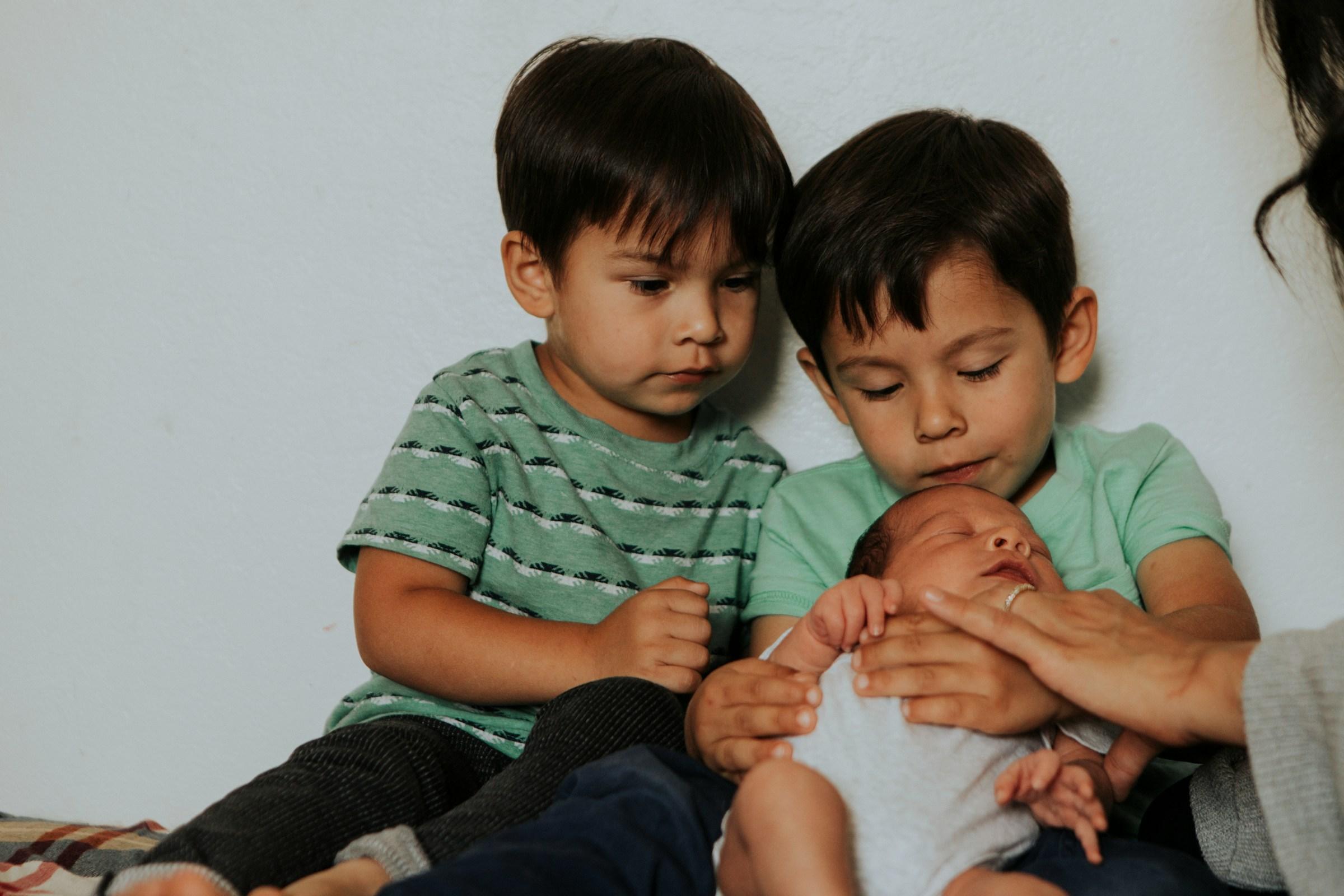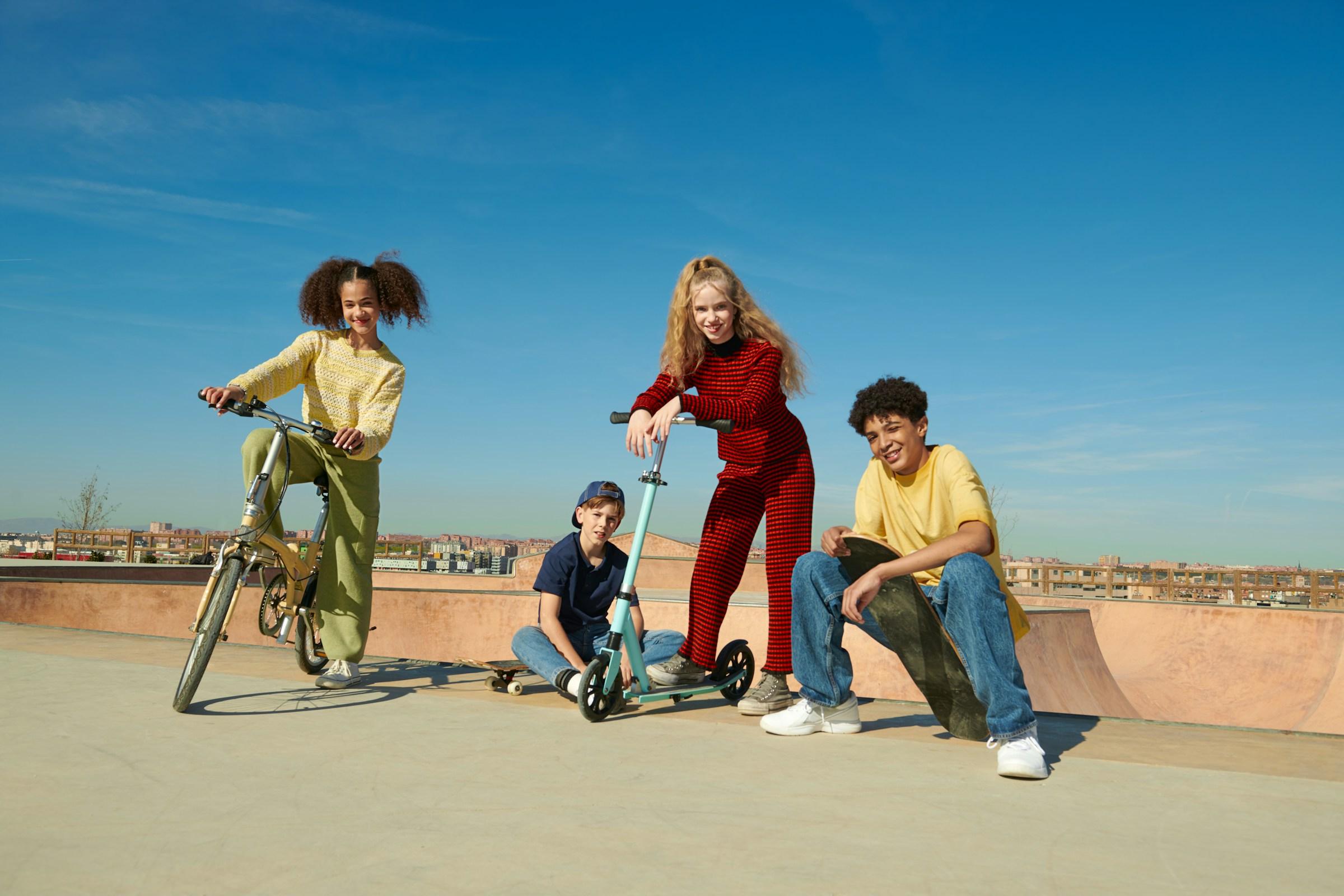Picture a living room in 2035. A child asks a question out loud, not to a parent, but to the family’s small glowing speaker. An AI voice responds, translating a grandparent’s message from another country into a language the child understands. The television is on, but muted, while subtitles drift across the screen in real time. Notifications appear in corners, then fade. In homes like this, the next generation is already learning that speaking, typing, drawing, and tapping are all part of the same conversation. This is one of the quiet ways Gen Beta will shape the future of communication.
Gen Beta is arriving in a world where connection is woven into the walls. For them, messaging will not mean opening a single app, but interacting with an environment. Light strips that change color when someone important calls, bathroom mirrors that display a friend’s text while they get ready for school, kitchen screens that show shared family calendars and voice notes. Communication becomes less about one glowing rectangle and more about gentle signals placed throughout a home. Their default expectation will be that information finds them, not the other way round, which will reshape how brands, schools, and even governments speak to them.
They will also be the first fully AI fluent generation. Where millennials learned to search, and Gen Z learned to swipe and scroll, Gen Beta will learn to prompt. Asking good questions, refining answers, and moving between languages will feel like basic literacy. They will not be impressed that an email can be drafted by an assistant. They will be focused on whether that assistant understands context, tone, and values. As they bring this habit into work and relationships, communication will look less like polished speeches and more like collaborative drafts, co created with machines then refined by humans for nuance.
In family life, this will soften certain frictions and complicate others. Parents might leave video stories for their kids to watch before bed, auto translated for relatives abroad who want to be part of the same ritual. A child could share school news through a mixed thread of photos, doodles, and short voice notes that play while grandparents stir soup in a distant kitchen. Yet at the same time, Gen Beta may grow up with an instinct to outsource uncomfortable conversations. If an app can rephrase a difficult message, apologize neatly, or decline an invitation with charm, it becomes tempting to let the system carry the emotional load. The challenge will be teaching them that communication is not only about efficiency, it is about courage.
Visually, their world will tilt even further toward images and ambient signals. Gen Alpha already treats screenshots as a kind of diary, and Gen Z narrates life with short video clips. Gen Beta will go further. They might reply to a question with a quick room scan that captures mood and context in a single moment. They will send stylized image snippets instead of long explanations, and rely on auto generated captions to make sense of it all. Over time, this could make communication feel more intuitive, because visuals cut past language barriers. It could also make miscommunication more common, because tiny visual cues and cultural references are easy to misread across borders.
Their sense of privacy will be different, but not necessarily weaker. Growing up surrounded by cameras and sensors may make Gen Beta more deliberate than their predecessors about what they choose to record. They will understand that nothing online is truly temporary, no matter what a disappearing message claims. Instead of oversharing by default, many may keep tightly curated public personas while maintaining small, deeply encrypted circles that feel like private living rooms. Seen from the outside, they might look detached or guarded. From the inside, their communication may feel more intimate, built on shared jokes, niche references, and a mutual agreement to keep things inside the circle.
In schools, communication will become more multimodal and more personalized. A teacher’s explanation might appear simultaneously as spoken voice, illustrated animation, and text summary for students who learn differently. Group projects will stretch across continents, with translation baked into the tools so that a child in Dubai and another in Singapore can brainstorm as if they sit at the same table. Gen Beta will learn early that collaboration does not require shared geography, only shared rhythm. They will be comfortable leaving asynchronous video updates for teammates in other time zones, and that habit will travel with them into adulthood, reducing the pressure for everyone to be online at the same moment.
Inside the home, device placement will quietly train their communication patterns. A phone charging dock by the entrance encourages quick dropping of screens when people come in. A simple, beautiful speaker on the dining table invites group listening of a shared playlist or podcast. A small screen fixed to the fridge becomes the default spot for family notes, recipes, and heartfelt reminders. These design choices sound small, yet they send a constant message about how conversation should flow. Gen Beta, absorbing these cues, will be very sensitive to the environments they inhabit. When they grow up and design their own spaces, they are likely to prioritize calm visual signals over constant alerts, and choose tools that allow them to be present in a room while still loosely connected to people elsewhere.
Sustainability will slip into their communication habits as well. They will grow up amid visible climate strain and rising awareness of energy use. Sending endless high resolution video just to say one sentence may start to feel wasteful. Shorter messages, voice notes in place of long calls, and local sharing over server heavy platforms may become part of an unspoken etiquette. This will not be driven only by rules or carbon dashboards, but by a cultural shift that treats digital choices like physical waste choices. Just as reusable bags and water bottles became normal, energy conscious communication settings might become the quiet norm for Gen Beta, influencing platform design in the process.
Emotionally, they will push for more authenticity in how people speak to each other online. Gen Z has already started calling out overly polished brand voices and influencer scripts. Gen Beta will step into a world where AI can generate flawless, on trend language in seconds. Because of that, they will learn to value small imperfections as proof of humanity. A clumsy sentence, a slightly awkward pause in a voice note, a photo that is beautiful but not perfectly filtered, will feel more trustworthy. This does not mean they will reject AI support. Instead, they will probably use it to draft, then deliberately roughen the edges, adding a small typo or a candid line that signals a real person is there.
As they move into workplaces, Gen Beta will blur the line between formal and casual communication. The same person who sends a client a crisp summary built with AI support might close the day with a playful video update to the team, recorded while walking home past a favorite tree or coffee shop. Meeting recaps might be auto generated, but the emotionally important parts of communication praise, disagreement, reassurance will still rely on live voice, eye contact, or at least a personalized note. They will be quick to sense when leaders hide behind templated language. Work cultures that adapt will give them channels for honest, two way feedback, not just polished announcements.
At the same time, they may need help learning how to tolerate slowness. When translation, summarization, and scheduling can happen instantly, waiting for someone to be ready to talk feels even harder. This is where older generations will have something valuable to offer. Parents and mentors who insist on certain rituals long walks without phones, dinner conversations that are not recorded, weekends with minimal screen time will be giving Gen Beta a rare skill. The ability to sit with tension, to let a message breathe before replying, and to hold silence without filling it with content will become a kind of superpower in their communication landscape.
Ultimately, how Gen Beta will shape the future of communication comes down to the spaces they build and the choices they repeat. They will grow up surrounded by tools that can translate, polish, and broadcast every word. Their real influence will be in deciding when not to use them. In choosing smaller circles over endless reach. In designing homes where technology supports conversation instead of competing with it. In honoring the quiet message behind every design detail the lamp that lights a late night heart to heart, the plant that softens the glare of a laptop, the window that reminds you there is a world beyond the feed.
If previous generations treated communication as something that happened through devices, Gen Beta may treat it as something that happens through systems. Rooms, rituals, and digital tools working together. When they get this right, the future of communication will feel less exhausting and more grounded. Not louder, but clearer. Less about broadcasting, more about listening. And in that shift, our homes and our relationships might finally begin to breathe at the same calm, sustainable rhythm.








.jpg&w=3840&q=75)





